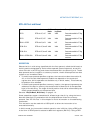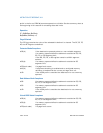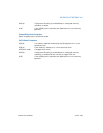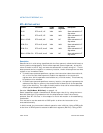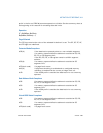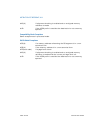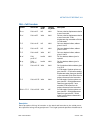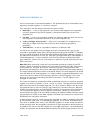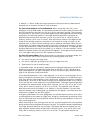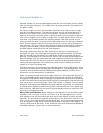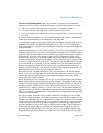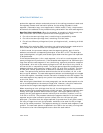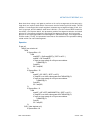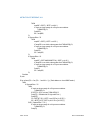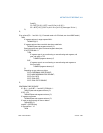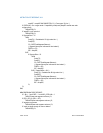
Vol. 2A 3-89
INSTRUCTION SET REFERENCE, A-M
CALL—Call Procedure
or 64 bits). In 64-bit mode the target operand will always be 64-bits because the
operand size is forced to 64-bits for near branches.
Far Calls in Real-Address or Virtual-8086 Mode. When executing a far call in real-
address or virtual-8086 mode, the processor pushes the current value of both the CS
and EIP registers on the stack for use as a return-instruction pointer. The processor
then performs a “far branch” to the code segment and offset specified with the target
operand for the called procedure. The target operand specifies an absolute far
address either directly with a pointer (ptr16:16 or ptr16:32) or indirectly with a
memory location (m16:16 or m16:32). With the pointer method, the segment and
offset of the called procedure is encoded in the instruction using a 4-byte (16-bit
operand size) or 6-byte (32-bit operand size) far address immediate. With the indi-
rect method, the target operand specifies a memory location that contains a 4-byte
(16-bit operand size) or 6-byte (32-bit operand size) far address. The operand-size
attribute determines the size of the offset (16 or 32 bits) in the far address. The far
address is loaded directly into the CS and EIP registers. If the operand-size attribute
is 16, the upper two bytes of the EIP register are cleared.
Far Calls in Protected Mode. When the processor is operating in protected mode, the
CALL instruction can be used to perform the following types of far calls:
• Far call to the same privilege level
• Far call to a different privilege level (inter-privilege level call)
• Task switch (far call to another task)
In protected mode, the processor always uses the segment selector part of the far
address to access the corresponding descriptor in the GDT or LDT. The descriptor
type (code segment, call gate, task gate, or TSS) and access rights determine the
type of call operation to be performed.
If the selected descriptor is for a code segment, a far call to a code segment at the
same privilege level is performed. (If the selected code segment is at a different priv-
ilege level and the code segment is non-conforming, a general-protection exception
is generated.) A far call to the same privilege level in protected mode is very similar
to one carried out in real-address or virtual-8086 mode. The target operand specifies
an absolute far address either directly with a pointer (ptr16:16 or ptr16:32) or indi-
rectly with a memory location (m16:16 or m16:32). The operand- size attribute
determines the size of the offset (16 or 32 bits) in the far address. The new code
segment selector and its descriptor are loaded into CS register; the offset from the
instruction is loaded into the EIP register.
A call gate (described in the next paragraph) can also be used to perform a far call to
a code segment at the same privilege level. Using this mechanism provides an extra
level of indirection and is the preferred method of making calls between 16-bit and
32-bit code segments.
When executing an inter-privilege-level far call, the code segment for the procedure
being called must be accessed through a call gate. The segment selector specified by
the target operand identifies the call gate. The target operand can specify the call
gate segment selector either directly with a pointer (ptr16:16 or ptr16:32) or indi-
rectly with a memory location (m16:16 or m16:32). The processor obtains the



